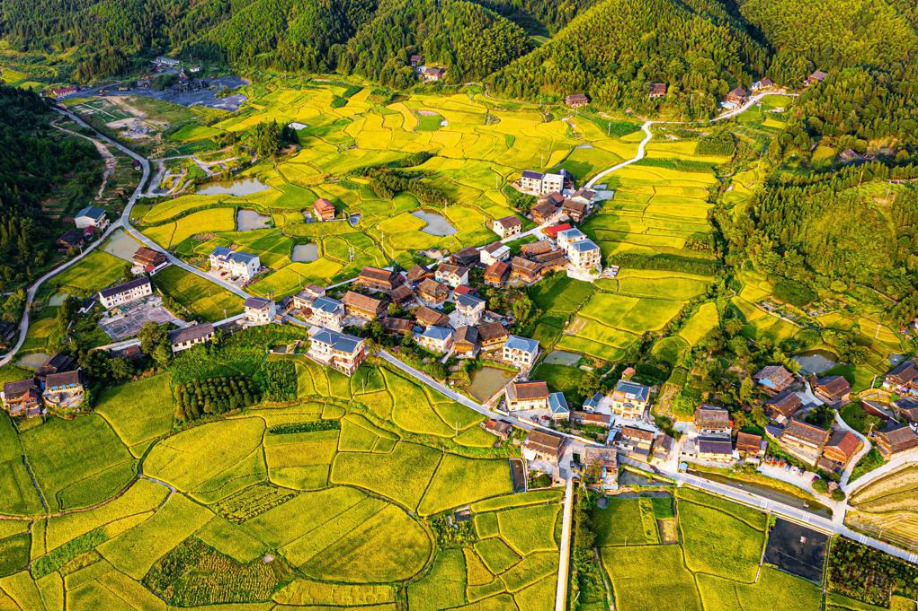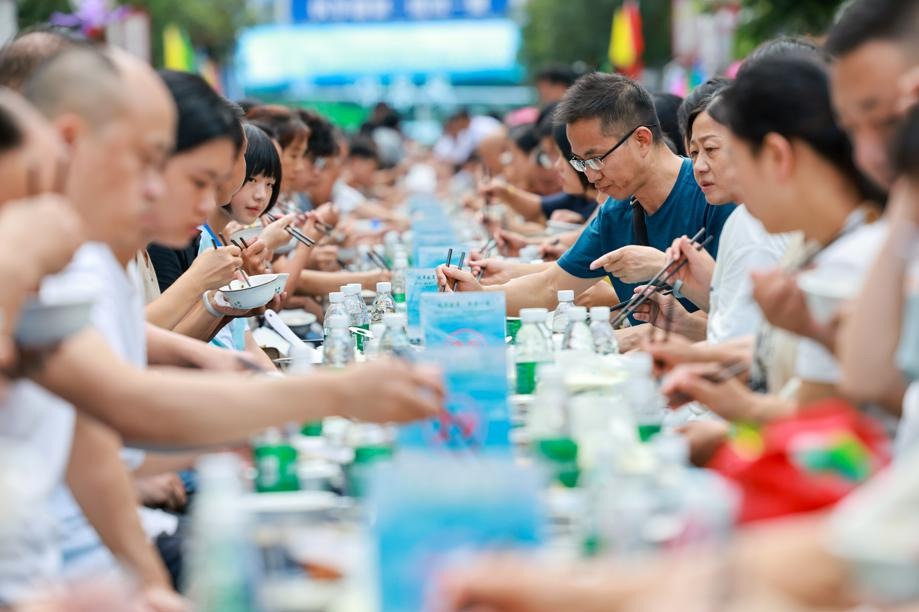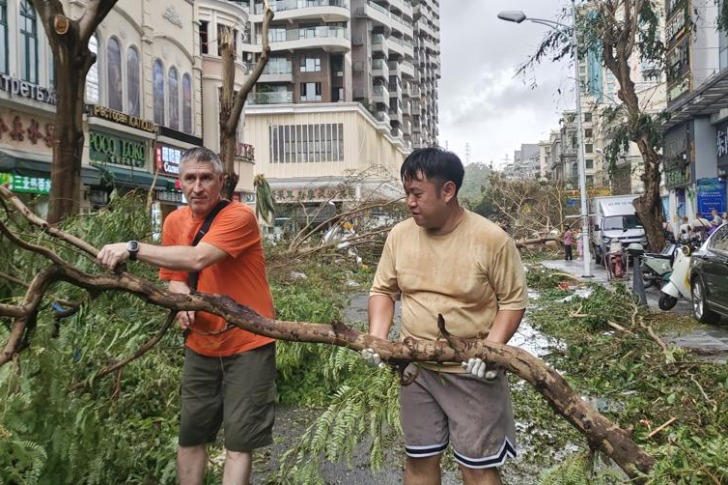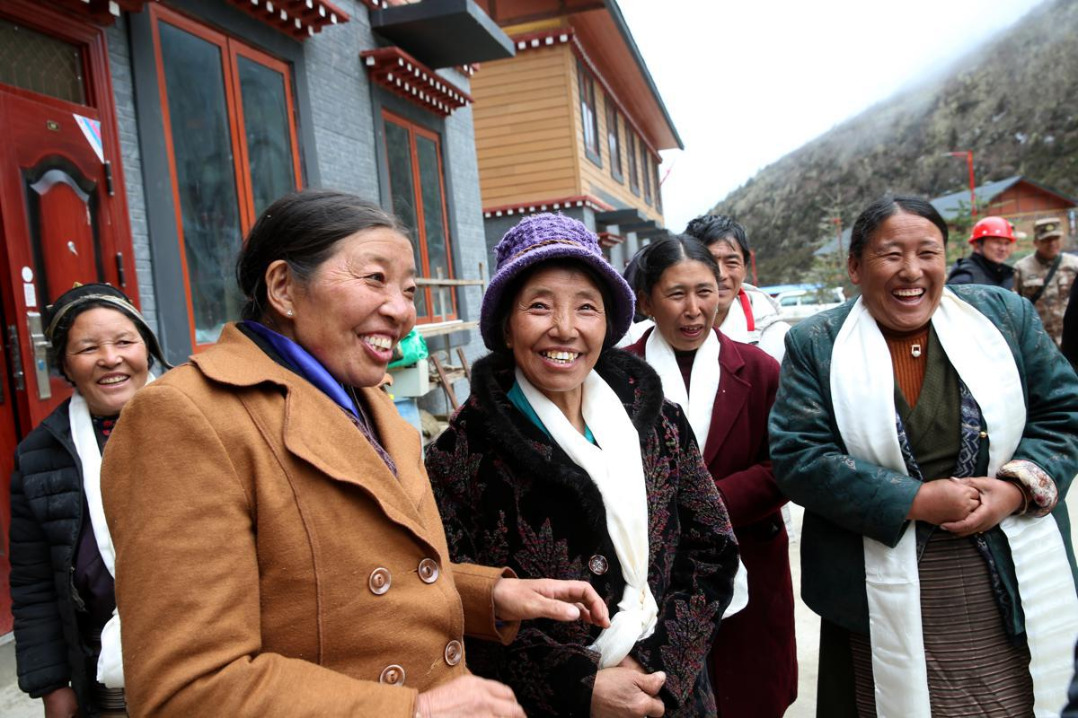Clean, green cities poised to take shape


According to Borelli, the program aims to establish forests within cities and restore those already existing in surrounding areas.
"Our goal is to plant 500,000 hectares of new forests and restore another 300,000 by 2030," he said.
"The timing and results will, of course, depend on our capacity to mobilize technical and financial resources. The use of vertical forests and green walls and roofs will also be considered, depending on local conditions and needs."
The program will promote, as much as possible, locally adapted native species, which will reduce the need for irrigation. In some instances, recycled wastewater, or even desalinated water, may be used.
For some time, urban planners have realized the enormous benefits of green cities-not only on the environment, where shading and evapotranspiration-can have a direct impact on cooling air and reducing temperatures by as much as 10 C, but also the positive impact on people's heath. Evapotranspiration refers to the process by which water is transferred from the land to the atmosphere by evaporation from the soil and other surfaces and by transpiration from plants.
According to the World Health Organization, green spaces in cities, such as parks and sports fields, as well as woods and natural meadows, wetlands and other ecosystems, are a fundamental component of any urban ecosystem.
It said green urban areas facilitate physical activity and relaxation and provide a refuge from noise. Trees produce oxygen, and help filter harmful air pollution, including airborne particulate matter. Bodies of water, from lakes to rivers and fountains, moderate temperatures.
Urban parks and gardens play a critical role in cooling cities and provide safe areas for walking and cycling-not only for getting around, but for physical activity, recreation and social interaction.
Green spaces are also important for mental health.
The WHO said access to such spaces can reduce "health inequalities", improve well-being and help in the treatment of mental illness. Some analysis suggests that physical activity in a natural environment can help counter mild depression and also reduce stress.
Dahiya, the urbanization expert, said: "Trees help combat climate change by absorbing carbon dioxide, removing it from the air. They help prevent soil erosion, especially in cities located on hilly terrain, as they slow the surface water runoff." In turn, preventing soil erosion also helps prevent natural disasters such as landslides and floods.
"Tree cover helps enhance urban biodiversity by providing habitat for all sorts of animals, reptiles, birds, insects and so on," he added.
"Trees add to the beauty of urban landscapes, improve livability, and thus contribute to rising property prices. They act as natural barriers and reduce noise pollution caused in traffic-intensive areas of a city."
Borelli, from the FAO, said China already has a number of "vertical forest projects".
"In my view, China has a vast amount of know-how that could be used to support countries in other parts of the world when this project gets off the ground," he said.
According to Boeri, the Italian architect, the future of urban living lies in plants, trees and shrubs.
His company's approach is simple: avoiding the unrestrained use of cement; blocking the expansion of cities by enclosing them with forests; safeguarding forests and biodiversity within cities to reduce pollution; and making nature an essential component of architecture.
"Cities produce nearly 70 percent of carbon dioxide emissions, the cause of phenomena such as the greenhouse effect, the melting of ice caps and rising sea levels, while forests and oceans are the main enemies of carbon dioxide, absorbing approximately 35 percent of the amount emitted," Boeri said.
"Bringing forests within cities, or creating forest cities, means fighting the enemy on its turf, and transforming carbon dioxide into a fertilizer to feed plants."
In the next 10 years, China is expected to be home to almost half of the world's new construction.
As the country finds fresh ways to bolster its robust economy with an emphasis on sustainability, significant investment opportunities are emerging in Chinese markets such as construction, architecture and urban design.
Many of the current construction projects in Chinese cities adhere to strict environmental regulations, and the government now requires that 50 percent of new urban buildings be certified sustainable.
China's Green Building Action Plan mandates that public buildings such as schools and hospitals meet sustainable building standards under the country's three-star rating system, the Green Building Evaluation Label. This system takes six categories into consideration-land, energy, water, resource efficiency, indoor environment quality and operational management.
One ambitious Forest City project is being planned in Shijiazhuang, a northern industrial hub and capital of Hebei province. It is hoped that the initiative will curb the city's high air pollution rate.
Artists' impressions from the company Stefano Boeri Architetti depict the Forest City as a sustainable utopia in which every building is covered in plants-nearly 1 million of them. These "green citizens" are expected to absorb thousands of tons of carbon dioxide and pollutants produced by 100,000 residents.
The Shijiazhuang Forest City is the most ambitious project of its kind underway in China, but it is not the first; neither will it be the last.
China's willingness to innovate in the architectural arena presents myriad possibilities for investors. The country's ambitious plans to support increasing urbanization-coupled with its determination to go green-will create abundant sustainable investment opportunities in groundbreaking architectural design.
UBS equity analyst Hyde Chen said, "Green buildings, green cities and energy efficiency will be among the interesting, thematic ideas investors can look out for in the 21st century."
Dahiya, the urbanization expert, said the initiative discussed in New York is a "welcome step toward addressing and tackling some of the perennial urban ecological and environmental issues we face today".
These issues include: alarming levels of biodiversity loss; growing average temperature levels, especially the urban heat island effect; air and noise pollution; lower groundwater tables; soil erosion; land degradation; and related natural hazards such as heat waves, droughts, gales, landslides and floods.
"We should encourage such concerted efforts toward greening of cities and expanding urban forests," Dahiya said.
However, expanding tree and forest cover, especially in larger cities, will not be easy, because of two interrelated factors, he said.
"First, the ever-growing demand for developed land for commercial, residential, institutional and industrial uses. Second, high land values that often prevent urban planners and policymakers from reserving land for tree cover, green spaces and urban forests-as opposed to allocating it for uses that contribute to urban and national economic growth.
"To tackle this difficult issue, on one hand, city governments will have to put a premium on green spaces and urban forests, and on the other, urban residents will have to demand a better quality of life-that is, improved urban livability-if we really want to have green cities now and in the future," Dahiya said.
- Organic agriculture forum unites global experts in Datong
- Guangdong and Macao launch cross-border medical transfer services
- African, Asian govt officials learn from Shenzhen's economic success
- Mainland slams Lai Ching-te for being US arms dealer's ATM by increasing defense budget
- Arab nations strengthen cultural ties with Ningxia
- China transport sector posts steady seven-month growth





































